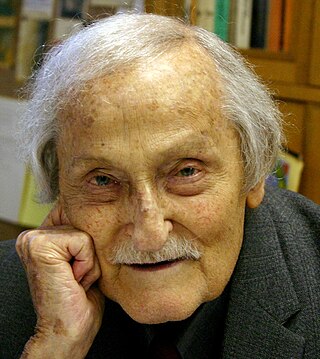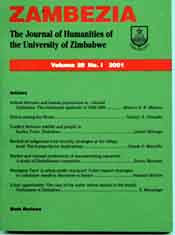
Zimbabwe, officially the Republic of Zimbabwe, is a landlocked country in Southern Africa, between the Zambezi and Limpopo Rivers, bordered by South Africa to the south, Botswana to the south-west, Zambia to the north, and Mozambique to the east. The capital and largest city is Harare. The second largest city is Bulawayo. A country of roughly 15 million people, Zimbabwe has 16 official languages, with English, Shona, and Ndebele the most common. Beginning in the 9th century, during its late Iron Age, the Bantu people built the city-state of Great Zimbabwe; the city-state became one of the major African trade centres by the 11th century, controlling the gold, ivory and copper trades with the Swahili coast, which were connected to Arab and Indian states. By the mid 15th century, the city-state had been abandoned. From there, the Kingdom of Zimbabwe was established, followed by the Rozvi and Mutapa empires.

Great Zimbabwe is a medieval city in the south-eastern hills of the modern country of Zimbabwe, near Lake Mutirikwi and the town of Masvingo. It is thought to have been the capital of a great kingdom during the Late Iron Age, about which little is known. Construction on the city began in the 9th century and continued until it was abandoned in the 15th century. The edifices are believed to have been erected by the ancestral Shona. The stone city spans an area of 7.22 square kilometres and could have housed up to 18,000 people at its peak, giving it a population density of approximately 2,500 per square kilometre. It is recognised as a World Heritage Site by UNESCO.

An academic journal or scholarly journal is a periodical publication in which scholarship relating to a particular academic discipline is published. Academic journals serve as permanent and transparent forums for the presentation, scrutiny, and discussion of research. They nearly universally require peer review or other scrutiny from contemporaries competent and established in their respective fields. Content typically takes the form of articles presenting original research, review articles, or book reviews. The purpose of an academic journal, according to Henry Oldenburg, is to give researchers a venue to "impart their knowledge to one another, and contribute what they can to the Grand design of improving natural knowledge, and perfecting all Philosophical Arts, and Sciences."
Shona is a Bantu language of the Shona people of Zimbabwe. The term is variously used to collectively describe all the Central Shonic varieties or specifically Standard Shona, a variety codified in the mid-20th century. Using the broader term, the language is spoken by over 14,000,000 people.

The American Academy of Arts and Sciences (AAA&S) is one of the oldest learned societies in the United States. It was founded in 1780 during the American Revolution by John Adams, John Hancock, James Bowdoin, Andrew Oliver, and other Founding Fathers of the United States. It is headquartered in Cambridge, Massachusetts.
The Arts and Humanities Citation Index (AHCI), also known as Arts and Humanities Search, is a citation index, with abstracting and indexing for more than 1,700 arts and humanities academic journals, and coverage of disciplines that includes social and natural science journals. Part of this database is derived from Current Contents records. Furthermore, the print counterpart is Current Contents.

The environmental humanities is an interdisciplinary area of research, drawing on the many environmental sub-disciplines that have emerged in the humanities over the past several decades, in particular environmental literature, environmental philosophy, environmental history, science and technology studies, environmental anthropology, and environmental communication. Environmental humanities employs humanistic questions about meaning, culture, values, ethics, and responsibilities to address pressing environmental problems. The environmental humanities aim to help bridge traditional divides between the sciences and the humanities, as well as between Western, Eastern, and Indigenous ways of relating to the natural world and the place of humans within it. The field also resists the traditional divide between "nature" and "culture," showing how many "environmental" issues have always been entangled in human questions of justice, labor, and politics. Environmental humanities is also a way of synthesizing methods from different fields to create new ways of thinking through environmental problems.

Phillip Vallentine Tobias was a South African palaeoanthropologist and Professor Emeritus at the University of the Witwatersrand in Johannesburg. He was best known for his work at South Africa's hominid fossil sites. He was also an activist for the eradication of apartheid and gave numerous anti-apartheid speeches at protest rallies and also to academic audiences.

Digital humanities (DH) is an area of scholarly activity at the intersection of computing or digital technologies and the disciplines of the humanities. It includes the systematic use of digital resources in the humanities, as well as the analysis of their application. DH can be defined as new ways of doing scholarship that involve collaborative, transdisciplinary, and computationally engaged research, teaching, and publishing. It brings digital tools and methods to the study of the humanities with the recognition that the printed word is no longer the main medium for knowledge production and distribution.
The Nguni people are a Bantu ethnic group from South Africa, with off-shoots in neighbouring countries in Southern Africa. Swazi people live in both South Africa and Eswatini, while Northern Ndebele people live in both South Africa and Zimbabwe.
The Industrial and Commercial Union (ICU) was a trade union and mass-based popular political movement in southern Africa. It was influenced by the syndicalist politics of the Industrial Workers of the World, as well as by Garveyism, Christianity, communism, and liberalism.
Thomas N. Huffman was Professor Emeritus of archaeology in association with the University of Witwatersrand in Johannesburg, South Africa. He specialised in pre-colonial farming societies in southern Africa. Huffman is most well known for his identification of the Central Cattle Pattern at Mapungubwe, a pre-colonial state in southern Africa. This, in turn he argued as the main influence in the formation of the Zimbabwe Pattern at Great Zimbabwe. Arguably his seminal contribution to the field was A Handbook to the Iron Age: The Archaeology of Pre-Colonial Farming Societies in Southern Africa (2007), which has contributed to the understanding of ceramic style analysis and culture history focusing on these groups.

The Greeks in Zimbabwe comprise about 3,000 people of Greek origin, almost half of them from the island of Cyprus. Zimbabwe currently hosts eleven Greek Orthodox churches and fifteen Greek associations and humanitarian organizations.
Michael C. FitzGerald is a professor of fine arts and director of the program in art history at Trinity College, Hartford, Connecticut, USA. After his A.B. in 1976 from Stanford University, FitzGerald obtained both his MBA and Ph.D. degrees from Columbia University in 1986 and 1987 respectively. He has worked for Christie's New York City Art Auction House and for several museums including New York City's Museum of Modern Art and the Whitney Museum of American Art.
Published between 1954 and 1981 Two Tone was a quarterly of Rhodesian poetry magazine, which signified a radical break with the largely conservative Eurocentric academic traditions which until then had dominated Zimbabwean poetry. Publishing poetry by both black and white writers working, predominantly in English but also in Ndebele and Shona, it challenged divisions and created a new open field for expression in divergent poetic voices and styles.

The Catholic University of Zimbabwe (CUZ) is a Catholic Church affiliated university established in 1999 in Harare, Zimbabwe's capital city. It offers six undergraduate degree programs: Bachelor of Business Management & Information Technology (Honors), Bachelor of Business Management (Honors), Bachelor of Accounting (Honors), Bachelor of Social Science in Development Studies (Honors), Bachelor of Theology and Bachelor of Arts Dual (Honours). It also offers a variety of short courses under the Faculty of Commerce and the Faculty of Humanities.
Brian Raftopoulos is a Mellon Senior Research Mentor at the Centre for Humanities Research at the University of the Western Cape and a former Associate Professor of Development Studies at the University of Zimbabwe. He first emigrated to South Africa in 2006 to serve as Director of Research and Advocacy in the human rights NGO Solidarity Peace Trust.
In Canada the Institutes of Health Research effected a policy of open access in 2008, which in 2015 expanded to include the Natural Sciences and Engineering Research Council and Social Sciences and Humanities Research Council. The Public Knowledge Project began in 1998 at University of British Columbia. Notable Canadian advocates for open access include Leslie Chan, Jean-Claude Guédon, Stevan Harnad, Heather Morrison, and John Willinsky.
Professor Victor Ngonidzashe Muzvidziwa is the current Vice Chancellor of Midlands State University in Zimbabwe. He is an anthropologist trained at the University of Waikato, New Zealand. His other qualifications, BA and MA, are from the University of Zimbabwe.









